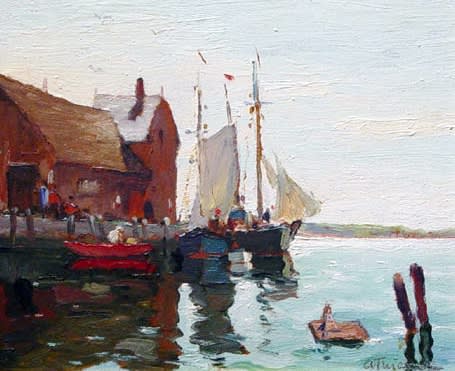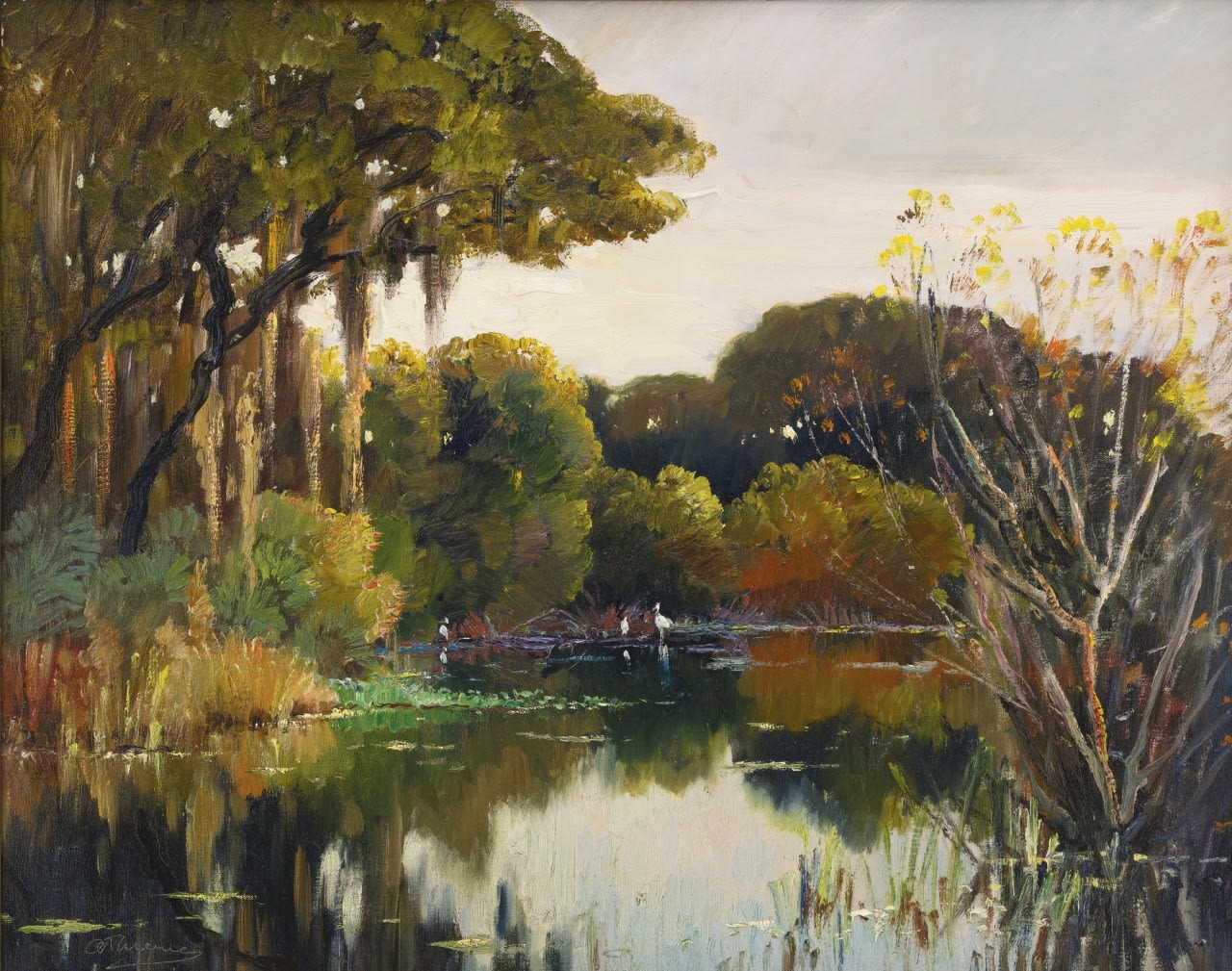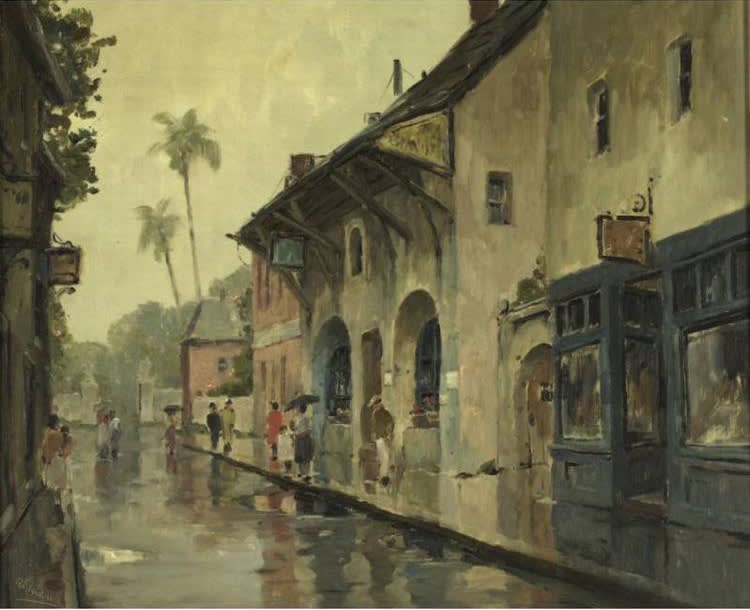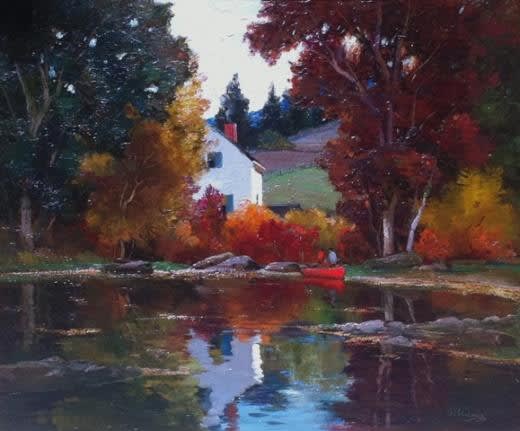Anthony Thieme in Rockport
There are still people in Rockport, Massachusetts, who were children when Anthony Thieme and his wife, Lillian, lived at 6 South Street, and remember them fondly. The Thieme held garden parties and hosted students in dormitories, built behind their house, for young artists who studied at the Thieme Summer School of Art from 1929 to 1943.
Thieme's papers are stored in the Archives of American Art in the Smithsonian. "A good landscape painter must paint fast to catch the light of any hour." he told his students. "Unless you know what to put in, what to leave out, the result is a mess. A good carpenter has the best of tools. A good artist should have the same. Use only the best canvas, brushes, and paint. How can you expect to turn out a good canvas if your palette is dirty? Wear holes in the soles of your shoes, but spend money on plenty of paint."
The art school closed its doors in 1943, due to Thieme's poor health. He continued to paint landscapes that won him much acclaim. His painting, Motif No. 1, of a Rockport fishing shack, was reproduced in prints and on Christmas cards and reportedly earned him about $200,000 during the 1930s and 40s.
In December, 1946, there was a fire in Thieme's Rockport studio. Some of his paintings were saved but many were destroyed.
Finding the Lost Colony in St. Augustine
Thieme and his wife began to travel south for the winter and, in 1948, Thieme set up a studio in St. Augustine and joined the St. Augustine Art Association. St. Augustine provided Thieme with a vast array of subjects and he provided the group with his support and prestige.
The Lost Colony, active from 1930 to 1950, was made up of both professional and amateur artists, many from northern states, who turned St. Augustine into a thriving winter art colony. None of the artists attained the fame of Anthony Thieme, but many were very talented, and the group produced varied and unique works.
Thieme painted scenes along the St. Johns and Suwanee Rivers, shanties in Palatka, the Ponte Vedra beach and the streets of St. Augustine. His paintings, like Vermont Autumn Glory, were able to capture the colors and feel of the northern states, but in Florida, he was called the master of light, because of his ability to capture the play of the Florida sun on the water and landscape, much different than the light in the north.
The St. Augustine Chamber of Commerce used Thieme's work to help publicize the town and to attract artists and art lovers to St. Augustine. Thieme's paintings won awards in both St. Augustine and Miami and were exhibited at the Miami Beach Art Center and other venues in Miami and Palm Beach.
Leaving a Legacy
Lillian said that her husband often insisted that "'he was born fifty years too late." He was born in Rotterdam in 1888 and became an American citizen in 1935. "He disliked the rush and roar of the modern age" she said, "… this conflict was always within him, the longing to paint peace and quiet, beauty and harmony, yet confronted daily with the ugliness of modernity."
In December, 1954, after painting in Majorca for a year and preparing for an upcoming exhibition, the Thiemes traveled from their home in Rockport to St. Augustine. The couple stopped in a hotel in Connecticut along the way, It was there that Thieme shot himself. He did, reportedly, have health issues, but the reasons for his suicide, at age 66, are not clear.
Anthony Thieme and his wife had been married for twenty five years, and she continued to care for and exhibit his work after his death. Thieme's work can be found at the Los Angeles County Museum of Art, the Metropolitan Museum of Art, the Montclair Art Museum, the Boston Museum of Fine Arts and other venues around the world.




